With thanks to Ms. Chen, from whose blog I borrowed this concise listing of the Principles:
http://practicumjourney.wordpress.com/art-10-drawing-painting/principles-of-design/
Principles of Design
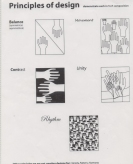

Principles of Design are descriptions of how artists organize the elements of art. List of the principles sometimes varies, but the main points are covered here.
Balance
shows equalizing visual forces, so no one part overpowers, or seems heavier than any other part. Visual imbalancemakes the viewer feel that the elements need to be rearranged.
Two types:
- formal (symmetrical)
- informal (asymmetrical)

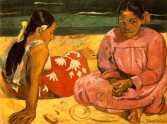

Emphasis/Proportion
making one part of the work dominant over the other parts, in another word, making an element or an object stand out.
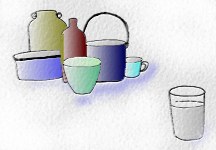
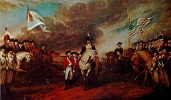
Movement/Rhythm
Rhythm refers to the way your eye moves throughout a picture. Some pictures move you throughout in a connected, flowing way much like a slow, stately rhythm in music. Other pictures move you from one place to another and give you the impression of movement.Rhythm in art is created by the repetition of elements. Similarity of elements, or flowing, circular elements will give a more connected flowing rhythm to a picture, while jagged, or unrelated elements will create a more unsettling, dynamic picture.

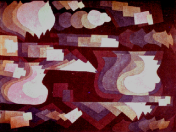

Pattern/Repetition
shows repetition of an element or elements in artwork- Random Pattern – a pattern in which the elements are repeated but in no particular way
- Fixed Pattern – a pattern in which the elements are repeated over and over again in specific way



Contrast/Variety
shows difference, for example when combining one or more elements of art to create interest by adding slight changesSome of the most common ways of creating Contrast are by creating differences in:
- Sizes – large vs. small
- Shapes – geometric vs. organic/free form, real vs. abstract
- Values – light vs. dark
- Colors – warm vs. cool, complementary, intense vs. dull
- Textures – smooth vs. rough
- Direction – horizontal vs. vertical/diagonal/curved

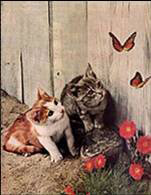

Unity/Harmony
quality of wholeness, oneness or completeness that is achieved through effective use of elements and principles of art, key focus on simplicity, repetition and continuation.Ways to Create Unity:
- Repetition - By using similar lines, colors, shapes, textures, values or forms, you can create a feeling of unity because of the similar elements being used.
- Proximity - one of the simplest ways to create unity is by grouping objects in a work of art closely together.
- Continuation - A subtle method of unifying a work of art, which involves the continuations of a line, edge or direction from one shape or area to another.
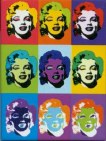


Sources:



